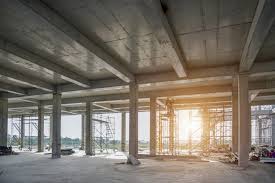In the world of production, choosing the right substances is essential to ensuring the durability, protection, and efficiency of homes. Among the numerous factors to keep in mind, climate resistance stands proud as an important element that influences the sturdiness and overall performance of structures. This blog delves into the impact of weather-resistant materials, inspecting their types, blessings, and applications, and highlights key considerations in procurement and creation.
Understanding Weather-Resistant Materials
Weather-resistant substances are specially designed to face up to various environmental conditions, which include rain, wind, snow, and severe temperatures. These substances play a critical role in protecting systems from damage caused by harsh climate, thereby enhancing their durability and lengthening their lifespan. By incorporating climate-resistant substances, builders can ensure that homes remain purposeful and secure no matter the challenges posed via the factors.
Types of Weather-Resistant Materials
Advanced Concrete Technologies
Concrete is an essential construction fabric, however its performance may be appreciably progressed with superior technologies. Innovations inclusive of polymer-modified concrete and self-recovery concrete offer superior resistance to weather-associated wear and tear. These improvements help save you from issues like cracking and spalling, which could compromise the structural integrity of homes through the years.
High-Performance Roof Materials
Roofs are especially prone to climate situations, making the selection of roofing substances critical. High-performance alternatives like metallic roofs and synthetic composites provide advanced resistance to rain, hail, and UV radiation. Metal roofs, for instance, are recognized for their durability and capacity to reflect daylight, which helps in preserving strength and efficiency inside the building.
Weather-Resistant Cladding
Cladding materials serve as the primary line of defense in opposition to environmental factors. Weather-resistant cladding options together with fiber cement and dealt with wood offer wonderful safety towards moisture and temperature fluctuations. Fiber cement forums, for example, are proof against rot, fireplaces, and bugs, making them a reliable choice for various construction exteriors.
Special Considerations in Procurement
FF&E and OS&E Procurement
In the procurement process, selecting weather-resistant materials is crucial for both FF&E (Furniture, Fixtures, and Equipment) and OS&E (Operating Supplies and Equipment). These materials ensure that components like exterior furniture and operational supplies withstand environmental challenges. Proper FF&E and OS&E Procurement practices can lead to a more durable and maintenance-free setup. For more details on effective procurement strategies, visit our website.
Budget and Cost Implications
The choice of weather-resistant materials can significantly impact the overall budget of a construction project. While these materials may come with higher upfront costs, their long-term benefits often outweigh the initial investment. Reduced maintenance and increased durability contribute to cost savings over the life of the building, making weather-resistant materials a worthwhile investment.
Benefits of Using Weather-Resistant Materials
Enhanced Longevity
One of the number one advantages of weather-resistant materials is their capacity to extend the lifespan of buildings. By stopping harm from environmental factors, these materials lessen the need for common repairs and replacements. This long-term sturdiness now not most effectively complements the construction’s cost but also minimizes upkeep charges through the years.
Improved Safety
Safety is a paramount problem in creation, and climate-resistant materials make contributions appreciably to this aspect. Buildings which can resist severe weather situations are much less probably to be afflicted by structural disasters or harm at some stage in storms and natural screw-ups. This added protection enables to make sure the protection of occupants and minimizes capability risks related to climate-associated events.
Energy Efficiency
In addition to their protective features, climate-resistant substances often make a contribution to better energy performance. For instance, excessive-overall performance roofing substances and insulated cladding can reduce warmness loss and benefit, mainly by decreasing strength consumption for heating and cooling. This is no longer the most effective blessing to the environment however also results in cost savings for building proprietors.
Case Studies and Examples
Successful Projects Using Weather-Resistant Materials
Numerous construction projects have established the effectiveness of weather-resistant substances. For example, using excessive-performance concrete in coastal buildings has verified to withstand saltwater corrosion, ensuring the toughness of structures in tough environments. Similarly, buildings in areas susceptible to heavy rainfall have benefited from advanced roofing materials that save you water infiltration and related troubles.
Comparing Different Materials
When evaluating weather-resistant substances, it’s vital to take into account their performance in diverse environments. For example, whilst metal roofs excel in regions with high UV publicity, artificial composites can be more suitable for regions with heavy snowfall. Analyzing the precise necessities of a challenge and comparing the advantages of different substances can assist in making informed decisions.
The Role of Galvanized Steel
Why Galvanized Steel?
Galvanized steel is a popular choice in construction due to its exceptional weather resistance. The galvanization process involves coating steel with a layer of zinc, which protects it from rust and corrosion. This makes Galvanized Steel an ideal material for applications exposed to harsh environmental conditions, such as structural supports and roofing elements.
Applications and Benefits
Galvanized steel is widely used in various construction applications, including framing, fencing, and roofing. Its resistance to corrosion ensures that it maintains structural integrity and appearance over time. For more information on how galvanized steel can enhance your construction projects, check out our website.
Future Trends and Innovations
Emerging Materials
The field of weather-resistant materials continues to evolve with new innovations. Emerging materials such as self-cleaning coatings and advanced composites promise even greater durability and performance. Keeping abreast of these developments can help builders and developers make the most of the latest technology in construction.
Sustainability and Green Building
Weather-resistant materials also play a role in sustainable building practices. Many of these materials are designed with environmental considerations in mind, such as reducing energy consumption and minimizing waste. Integrating weather-resistant materials into green building projects aligns with the growing emphasis on sustainability and eco-friendly construction practices.
Conclusion
In summary, weather-resistant materials are essential for ensuring the durability, safety, and efficiency of construction projects. By understanding the types, benefits, and applications of these materials, builders can make informed choices that enhance the longevity and performance of their structures. Whether it’s through advanced concrete technologies, high-performance roofing, or galvanized steel, selecting the right materials is key to achieving long-lasting and resilient buildings. Explore more about weather-resistant solutions and ff&e project procurement on our website to make your next construction project a success.



